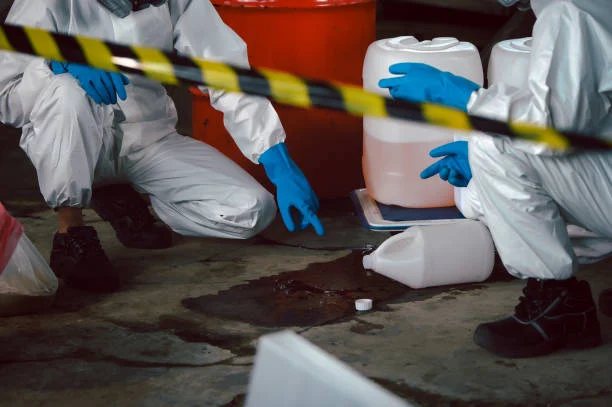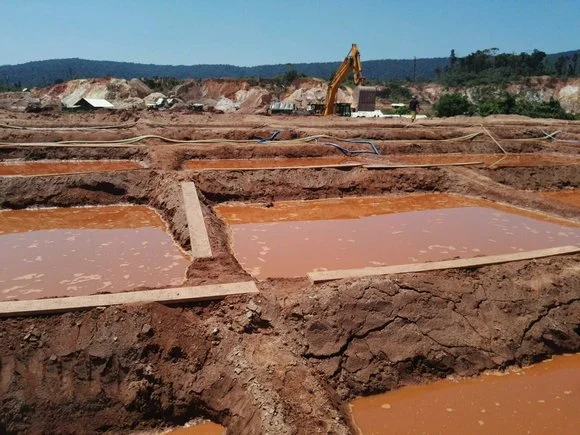
Sodium cyanide is a highly toxic and dangerous chemical compound widely used in various industrial processes, such as gold mining, electroplating, and chemical synthesis. Due to its extreme Toxicity and potential for harm to human health and the environment, strict precautions must be taken during its Transport and Storage to prevent accidents and ensure safety.
Understanding the Properties of Sodium Cyanide
Sodium cyanide (NaCN) is a white, crystalline solid with a faint almond - like odor. It is highly soluble in water and forms a strongly alkaline solution. One of the most critical aspects of Sodium cyanide is its extreme toxicity. In the presence of acids or water, it can release hydrogen cyanide gas, which is extremely poisonous and can cause rapid death even at low concentrations. This characteristic makes it essential to handle sodium cyanide with the utmost care throughout its life cycle, from production to disposal.
Regulatory Requirements for Transport and Storage
Transport Regulations
In most countries, the transport of sodium cyanide is subject to strict regulations. For example, in the United States, the Department of Transportation (DOT) has established comprehensive rules under the Hazardous Materials Regulations (HMR). These regulations cover aspects such as proper Packaging, labeling, and placarding of sodium cyanide shipments. The packaging must be designed to prevent leaks and withstand normal handling conditions during transportation. Labels and placards must clearly indicate the presence of a highly toxic substance, along with emergency contact information.
Internationally, the International Maritime Dangerous Goods (IMDG) Code governs the transport of sodium cyanide by sea. It sets out requirements for the classification, packing, and stowage of the chemical to ensure safe maritime transport. Similarly, the International Air Transport Association (IATA) Dangerous Goods Regulations apply to air transportation, with specific provisions for the safe carriage of sodium cyanide in aircraft.
Storage Regulations
Storage of sodium cyanide is also tightly regulated. Facilities storing sodium cyanide must comply with local, national, and international safety standards. These standards often require the storage area to be located in a well - ventilated, secure location away from sources of heat, ignition, and incompatible materials. For example, sodium cyanide should never be stored near acids, as the reaction between them can release the deadly hydrogen cyanide gas.
The storage containers must be made of materials that are resistant to corrosion by sodium cyanide and are designed to prevent leaks. Additionally, storage facilities are required to have emergency response plans in place, including spill containment and decontamination procedures. Regular inspections of the storage area and containers are also mandatory to ensure compliance with safety regulations.
Safety Measures in Transport

Packaging
Proper packaging is the first line of defense in the safe transport of sodium cyanide. The packaging materials must be able to withstand physical stress, temperature changes, and humidity during transportation. UN - approved packaging is commonly used, which includes drums, boxes, and intermediate bulk containers (IBCs) made of steel, plastic - lined steel, or high - density polyethylene. These containers are tested to ensure they can prevent leaks under normal and foreseeable accident conditions.
Inner liners are often used within the packaging to provide an additional barrier against leakage. For example, double - lined plastic bags can be used inside steel drums to contain the sodium cyanide. The packaging must also be properly sealed to prevent the entry of moisture or air, which could initiate chemical reactions.
Loading and Unloading
During loading and unloading operations, strict safety protocols must be followed. Workers involved in these activities should be trained in handling hazardous materials and be equipped with appropriate personal protective equipment (PPE), including chemical - resistant suits, gloves, goggles, and respiratory protection.
The loading and unloading areas should be clean, dry, and free of any potential sources of ignition or contamination. Specialized equipment, such as forklifts with appropriate attachments, should be used to handle the heavy containers of sodium cyanide. Care must be taken to avoid dropping or damaging the containers during these operations.
Transportation Vehicles
Transportation vehicles used for sodium cyanide must be specifically designed and equipped to handle hazardous materials. Trucks, trains, and ships transporting sodium cyanide should have features such as spill - containment systems, emergency shut - off valves, and proper ventilation. The vehicles must also be regularly inspected and maintained to ensure their safety systems are in working order.
In the case of road transport, trucks should follow designated routes that avoid populated areas and sensitive environmental zones whenever possible. They should also be equipped with tracking devices so that their location can be monitored in real - time in case of an emergency.
Safety Measures in Storage

Storage Facility Design
The design of the storage facility for sodium cyanide is crucial for safety. The facility should be located in an area with proper drainage to prevent the spread of any leaked sodium cyanide in case of an accident. It should be surrounded by a secure perimeter fence to restrict access to authorized personnel only.
The storage building should be constructed with fire - resistant materials and have a ventilation system that can remove any potentially harmful gases. The ventilation system should be designed to operate continuously or be activated automatically in case of a gas leak.
Container Storage
Sodium cyanide containers should be stored in a manner that minimizes the risk of damage and leakage. They should be placed on pallets or raised platforms to prevent contact with the floor and to facilitate inspection for leaks. Containers should be stored away from walls and other structures to allow for proper ventilation and access for emergency response.
Regular visual inspections of the containers should be carried out to check for signs of corrosion, dents, or leaks. Any damaged containers should be immediately removed from the storage area and placed in a secure, secondary containment area for proper disposal or repair.
Emergency Response Planning
An effective emergency response plan is essential for any facility storing sodium cyanide. The plan should include procedures for responding to spills, leaks, and gas releases. It should also specify the roles and responsibilities of the facility staff in case of an emergency.
Emergency response equipment, such as spill kits, absorbent materials, and gas detection devices, should be readily available at the storage facility. Regular training and drills should be conducted to ensure that the staff is familiar with the emergency response procedures and can act quickly and effectively in case of an incident.
Conclusion
The transport and storage of sodium cyanide are activities that require the highest level of safety awareness and compliance with regulations. By understanding the properties of sodium cyanide, adhering to Regulatory requirements, and implementing strict Safety measures in both transport and storage, the risks associated with this highly toxic chemical can be significantly minimized. It is the responsibility of all parties involved in the handling of sodium cyanide, from producers to transporters and storage facility operators, to ensure the safety of workers, the public, and the environment.
- Random Content
- Hot content
- Hot review content
- China factory Sulfuric Acid 98%
- High Quality Sodium silicate 99% Water glass
- Hydrogen Peroxide
- Gold Ore Dressing Agent Safe Gold Extracting Agent Replace Sodium Cyanide
- lithium Carbonates 99.5% Battery Level or 99.2% Industry grade 99%
- Isobutyl vinyl ether 98% high purity certified Professional producer
- Food grade Antioxidant T501 Antioxidant 264 Antioxidant BHT 99.5%
- 1Discounted Sodium Cyanide (CAS: 143-33-9) for Mining - High Quality & Competitive Pricing
- 2China's New Regulations on Sodium Cyanide Exports and Guidance for International Buyers
- 3Sodium Cyanide 98% CAS 143-33-9 gold dressing agent Essential for Mining and Chemical Industries
- 4International Cyanide(Sodium cyanide) Management Code - Gold Mine Acceptance Standards
- 5China factory Sulfuric Acid 98%
- 6Anhydrous Oxalic acid 99.6% Industrial Grade
- 7Oxalic acid for mining 99.6%
- 1Sodium Cyanide 98% CAS 143-33-9 gold dressing agent Essential for Mining and Chemical Industries
- 2High Quality 99% Purity of Cyanuric chloride ISO 9001:2005 REACH Verified Producer
- 3Zinc chloride ZnCl2 for High Molecular Weight Polymers Initiator
- 4High Purity · Stable Performance · Higher Recovery — sodium cyanide for modern gold leaching
- 5High Quality Sodium Ferrocyanide / Sodium Hexacyanoferr
- 6Gold Ore Dressing Agent Safe Gold Extracting Agent Replace Sodium Cyanide
- 7Sodium Cyanide 98%+ CAS 143-33-9











Online message consultation
Add comment: